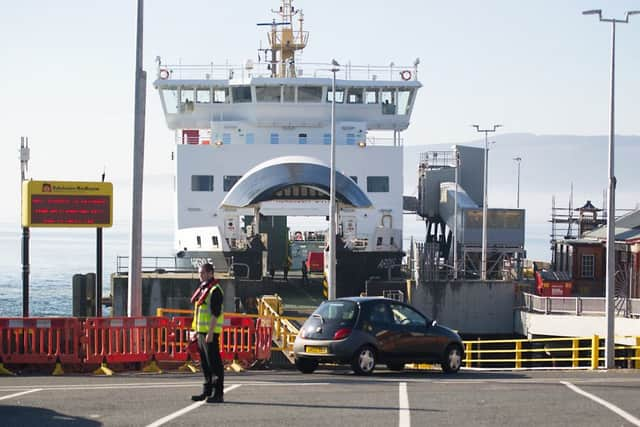Cutting CalMac ferry fares ‘bad for environment’


The firm said car traffic on its main Arran route had soared by more than 40 per cent since ticket prices were cut there last year.
It expects a similar increase on the main route to Bute, whose ferries carry the third most domestic passengers in Scotland - 677,000 in 2013.
Advertisement
Hide AdAdvertisement
Hide AdFares for cars on the service were cut to £10.95 one-way last Thursday compared to £15.95-£20.15 depending on the season.
Similar savings will be introduced on CalMac’s busiest passenger route, to Cumbrae (709,000), and on its fourth busiest, to Mull (553,000), in three weeks’ time.
The fare reductions complete the Scottish Government’s policy of improving access to the islands with a “road equivalent tariff” (RET) for each link so ferry travel matches the cost of covering the same distance on land.
However, Scottish Government-owned CalMac is worried it will increase car use, which ministers want to curb.
Some of this will be generated by more visitors taking their cars to the slands, but the company said it was likely to increase car commuting too.
Chief executive Martin Dorchester told The Scotsman: “If we are not careful, by making it more affordable, people may switch from public transport to the car.”
He said CalMac would be discussing the impact with ScotRail, whose trains connect with ferries at Ardrossan on the Brodick route from Arran.
Wemyss Bay Station is beside the ferry terminal on the main Bute route from Rothesay. Sailings have been switched to Gourock – which also has an adjacent station – until March, during harbour improvement work.
Advertisement
Hide AdAdvertisement
Hide AdDr Richard Dixon, director of Friends of the Earth Scotland, said: “Few would disagree with the idea of making sure island life if not threatened by high ferry costs, but these new figures show the scheme has gone too far and is actually encouraging new car journeys.
“That means extra traffic on the rural road network and fewer passengers on trains and buses. The Scottish Government urgently needs to review these unintended consequences of the road equivalent tariff and devise a way to rebalance the scheme.”
A spokesman for the Scottish Government’s Transport Scotland agency said: “The extension of RET has been a real success, bringing benefits to local businesses and providing a boost to the tourist trade.
“This is something we know is welcomed on the islands, and we expect to see a similar impact when it comes into effect on the remaining routes in the Clyde and Hebrides network.
“The full roll out of RET will play a key role in making sure our islands remain attractive and accessible to visitors, and island communities have affordable access to the mainland.
“We will be continuing to monitor the impact of RET on island communities and the RET formula will be reviewed annually.”